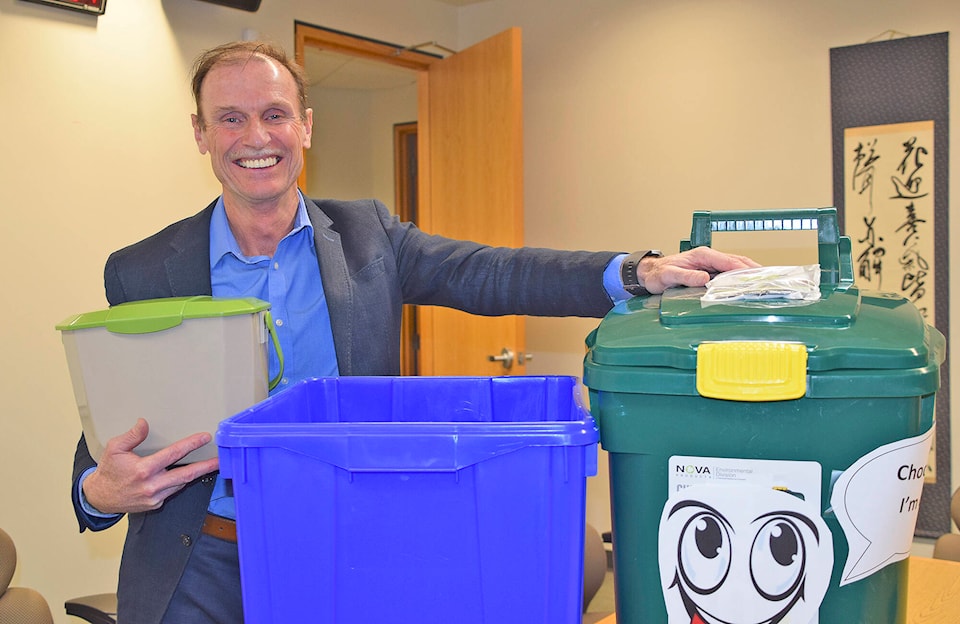The occasional broken compost bag and sour-smelling bucket. Uncertainty about whether it’s a garbage or recycling day. Corvids with a penchant for pulling apart recycling bins and spreading the contents on the ground prior to pickup.
These have been some of the negatives to Salmon Arm’s curbside garbage/recycling/compost collection program, at least the ones I’ve experienced, since it rolled out in July 2019. Really, they’re just minor inconveniences.
I began to consider pros and cons of our program after hearing news about efforts underway in the Regional District of Central Okanagan (RDCO) to get a curbside food waste collection program started.
While potentially affected residents there seem to be largely supportive, concerns were raised around pickup schedules, wildlife and pests, as well as odours and mess. It’s fair to say these concerns (which no doubt include bears) bear consideration.
The following are points about our program I might share with RDCO residents is asked. They are based solely on my experience with our city’s program, which provides residents with a wheeled compost bin, a kitchen compost bucket and a blue bin for recyclables.
Animals/pests can be a challenge with compost and, to a lesser extent, recyclables (thank you crows). The year our program rolled out, it was amended so that compost bins could no longer be put out the evening before to collection day. This was the result of a Bear Attractant Audit by the Conservation Officer Service. Compost program or no, being bear aware always a consideration in the Interior.
Also, for curbside compost bins, you may want to use compostable bags, and make sure they’re tied up before they’re binned. Also, make sure the bin’s lid properly seals. I won’t forget our former editor’s story about finding maggots in her faulty compost bin. (When they found out about this, the city’s contractor was quick to provide a replacement.)
Regarding cost, I don’t know what it will be for affected RDCO residents.
For our three-in-one service, Salmon Arm residents pay around $100 annually per residence (with additional costs depending on additional weekly output).
The introduction of our curbside program was followed by a sharp decline in the amount waste going into our Columbia Shuswap Regional District landfill. This brings us to another related cost – landfill maintenance and future closure.
According to a 2022 report, the city’s landfill currently has about 71 years left. The expensive processes of closure and new site selection/procurement are instabilities we’re able to push back by keeping recyclables and food waste out of our landfill. RDCO estimates a food waste collection program would annually keep around 7,500 tons of waste out of its landfill.
Of course, the other key benefit of our program comes in reuse, be it of compost or recycled materials. I’m not sure that, or any of the above information, will sway folks opposed the proposed RDCO program. As for our program, I’m sure others have different opinions, but I would argue it has, by and large, been a win for Salmon Arm residents.
Read more: Salmon Arm clarifies curbside collection dos and don’ts for residents
Read more: Automation a consideration for future curbside collection in Salmon Arm
